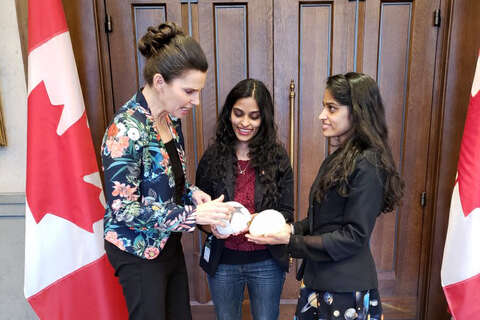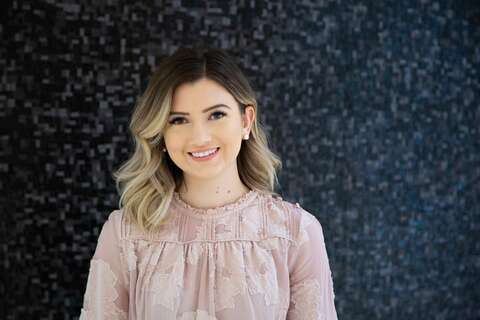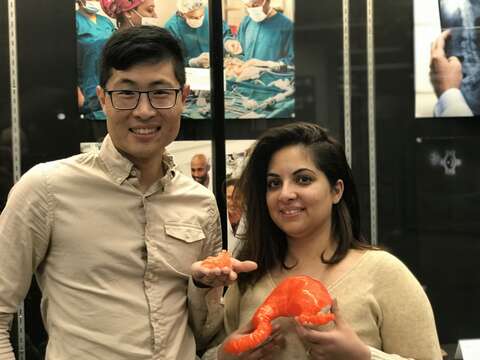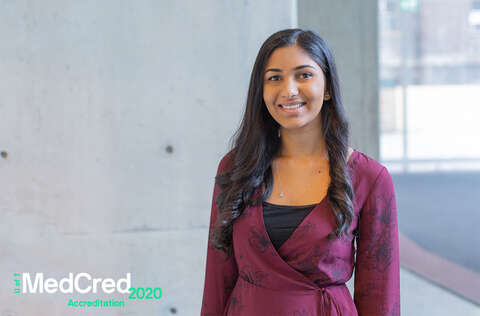Twins Go From Lab to Parliament Hill to Fight Concussions
The reason for identical twins Sandhya and Swapna Mylabathula’s visit to Parliament was no joke – even if they were carrying a life-size brain made of Jell-O on April Fools' Day.
They were invited to speak to a subcommittee on sports-related concussions, part of a roster of witnesses including top sports scientists and hockey legends like Eric Lindros and Ken Dryden.
“Concussions are a growing problem in Canada,” Swapna told MPs while she held up a graphic showing an increase in concussions among youth. “This represents a lot of sport concussions. This is just the tip of the iceberg. It truly is a public health problem.”
The sisters have been studying concussions since their undergraduate years in biology and nutritional sciences. For just about as long, they have also pushed for better policy on concussions, which affect one in 10 Ontario students. In Canada, about 46,000 concussions were diagnosed among youth up to age 19 by hospital emergency departments in 2016-2017.
Concussions are caused by a hit to the head or body that makes the brain move inside the skull. They can lead to symptoms ranging in severity – dizziness, headaches, seizures – and can be fatal.
At the subcommittee meeting, a few legislators shared their personal concussion stories – about being body-checked in hockey when they were young or knocked off their bikes on the way to work.
Sandhya and Swapna found an enthusiastic audience for their recommendations: incentives encouraging a culture shift within sport to reduce risks of concussions, a national research centre on concussions and a national concussion awareness week.
Neither of the sisters has had a concussion, but they have seen plenty as long-time hockey and Toronto Maple Leafs fans. In a TedX talk, they explain that their interest in the subject started around the time Paul Kariya – a gold medallist in hockey with Team Canada in 2002 – cut his career short due to repeated concussions.
Then there were even fewer resources in place for concussion sufferers, no strategy and little awareness, the sisters recalled in an interview with U of T News. They explained their reason for getting involved in advocacy, often finishing each other’s sentences.
Sandhya: “We saw this gap and thought: Someone’s got to do something.”
Swapna: “We can try.”
Sandhya: “Why not?”
Their visit to Parliament this spring wasn’t their first experience in policy-making. Years ago, they worked with their member of Parliament, Kirsty Duncan, now the minister of science and sport, on a bill to develop a pan-Canadian strategy on concussions. Sandhya and Swapna gathered thousands of signatures in support of the proposal, from their own Etobicoke riding to Prince Edward Island and British Columbia. Although the bill hasn’t become law, some of its elements are still being discussed in committee today.
The twins were also consulted on an Ontario policy on concussions that was implemented in public schools and was a precursor to Rowan’s Law, concussion-safety legislation passed in 2016. Its namesake, Rowan Stringer, was just 17 when she died on Mother's Day, after suffering what proved to be a fatal concussion in a rugby game.
Dr. Charles Tator, a professor of neurosurgery in the Faculty of Medicine and director of the Canadian Concussion Centre, is Swapna’s supervisor as she works toward her MD-PhD at U of T, but he knows both sisters through their advocacy. In her research, Swapna is evaluating Ontario’s policy on concussions in public schools before Rowan’s Law. Sandhya is a PhD candidate in the Faculty of Kinesiology & Physical Education and a fellow in public health policy with the Canadian Institutes of Health Research. She's researched concussion risk factors, policy, education and sex and gender considerations, among other things.
“They have achieved status and credibility in the concussion field, especially as related to policy,” Tator told U of T News.
The total number of concussions in Canada across all ages is as large as 200,000, according to some estimates. And about a quarter of people experience symptoms beyond one month, Tator says. “Some are unlucky enough to have symptoms be lifelong,” he added, “so this is an important condition. It’s a big health-care problem.”
“These sisters certainly have my admiration and my support,” he said. “I think it’s great they’ve taken up the cause and I hope they continue.”

Optimize this page for search engines by customizing the Meta Title and Meta Description fields.
Use the Google Search Result Preview Tool to test different content ideas.
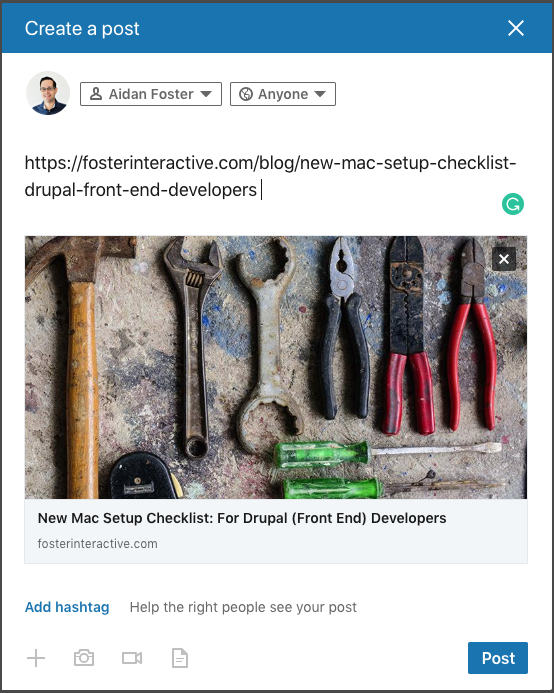
Select a Meta Image to tell a social media platform what image to use when sharing.
If blank, different social platforms like LinkedIn will randomly select an image on the page to appear on shared posts.
Posts with images generally perform better on social media so it is worth selecting an engaging image.
Geoffrey Vendeville
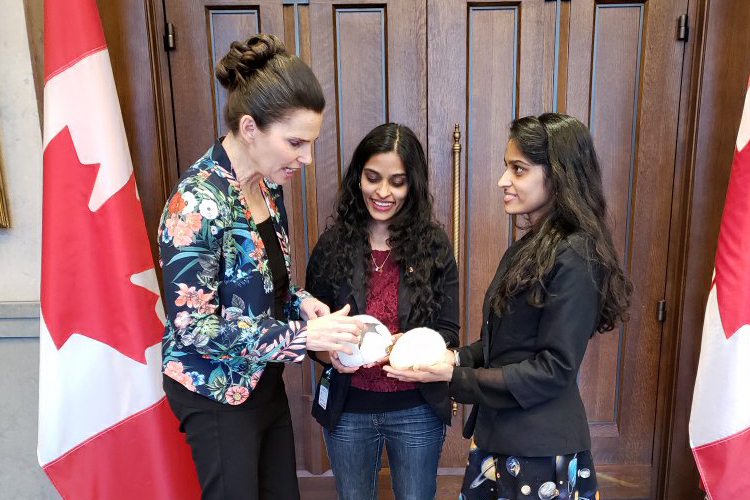
Faces of U of T Medicine: Courtney Francis
What made you want to become a doctor?
Ever since I was a little girl, I always said that I wanted to become a doctor. However, it wasn’t until I began volunteering at a local hospital and shadowing physicians that I truly knew that this was the career for me. Of course, I loved to learn and wanted to help people, but it was witnessing the patient-physician relationship that really drew me in. The relationship a physician gets to have with their patients is something so special that you cannot get with any other career. Patients share things with their physicians that no one else may ever know. That kind of encounter is so intimate and unique, and it is a privilege to be a part of.
As much as medicine is a science and requires medical expertise, it is also an art that requires strong interpersonal skills and empathy. I wanted to use my social and emotional intelligence to help comfort and listen to my future patients in order to provide them with the patient-centered medical care they all deserve.
You run an Instagram page called The Girly MD. Can you talk a bit about that? What made you want to run a personal blog on social media?
Yes, I run an Instagram page called, The Girly MD (to be), as well as a website and a YouTube channel. The Girly MD (to be) is a platform where I document my journey through medical school, as well as provide guidance and support to pre-med students. I started this account in my first year of medical school after noticing that there was a lack of Canadian presence in the medical blogging world. When I was a pre-med student, I loved learning more about the life of physicians and the pathway to medicine by following various medical bloggers, but they were mainly all Americans. When I got into medical school, I wanted to provide that same knowledge, experience, and inspiration to pre-med students by sharing my story as a Canadian in medicine.
I am also a first-generation student and my pathway to medicine required a lot of planning ahead and research. I did not know anyone in the medical field who I could rely on for support, and it took a lot of time and "Googling" to ensure that I met all the requirements for medical school. I want to be that source of support for pre-med students who, like me, may not have someone in medicine they can use as a resource. I also create informative blog posts and YouTube videos for pre-med students, so they can be successful in their own journey to medical school.
My hope for The Girly MD (to be) is to inspire young women to pursue their goals without being afraid of showing the world who they are. About 80% of my followers are young women, so I share my journey so openly to show these young women that despite being a "pink-loving girly girl," I am still intelligent, determined, and hardworking. Those two worlds CAN co-exist and are NOT mutually exclusive. Being “feminine” should not deter women from pursuing male-dominated careers. I want to inspire young women to be proud of who they are and help motivate them to achieve their goals.
In general, I also think it is so important for young people to know that being a doctor does not require you to fit into a certain mould. You can be who you are, you can do the things you love, and you can still be a successful physician. That is the message I am trying to send.
What has been the most valuable aspect of running your social media platforms?
One of the most valuable aspects of running my social media platforms is connecting with other women in medicine. Although I run my account to encourage young women to pursue their goals and to help provide guidance to pre-med students, I also follow the journeys of various other women in the field, including medical students, residents, physicians, PAs, and nurses. I’ve watched these women provide insight on how they maintain their relationship/marriage, how they balance work and motherhood, and how they dealt with stigma associated with being a woman in medicine.
Together, we all have formed this supportive family on social media where we all uplift one another. In fact, I have actually connected with a few of these women in person and now consider them my friends!
Do you plan to continue growing your channels when you’re done your studies and move on to being a practicing physician?
Yes! That is exactly what I plan on doing. I want this platform to document my entire journey through medical school, residency, and as a practicing physician. I want to show people what life as a medical professional is like and how I manage the other aspects of my life with a busy career. I also would like to use my social media accounts as a platform to educate patients on their own health. That way, it is easily accessible and they know the information is coming from a credible source.
What advice would you give to other medical students who may be thinking about venturing into the medical/science blogging world?
Go for it! It is an amazing way to connect with others in the field, document your journey, and show others what life as a medical student is like. It is also a great creative outlet and an amazing way to express yourself.
My main piece of advice is to only start something like this because it is something that you are passionate about and will enjoy doing. It takes up a lot of your time, especially if you are posting daily. Additionally, creating genuine content that your followers want to engage with takes a lot of thought, planning, and creativity.
How has your experience of being a medical student been so far?
My experience has been amazing so far. I absolutely love the MD Program and could not be happier with my choice to attend the University of Toronto. The Foundations Curriculum and class schedule involve a lot of independent and small group learning, which allows students to have more free time for extracurriculars and self-care. I also love how everything we learn in a given week is related to the block we are in. For example, when we were in our cardiology block, our lectures, anatomy lab, CBL, and clinical skills sessions all involved the cardiac system. It is very helpful and makes learning easier. Aside from academics, I also really love living in Toronto. The city is incredibly diverse and full of excitement, so there is always something to see or somewhere new to explore.
Do you know what specialty you’d like to get into?
I do not know exactly what specialty I want to pursue as of now, but I am really interested in women's health and sexual medicine. Right now, I am exploring the different ways I can pursue those interests and trying to discover which path best aligns with my values and goals.
Any words of wisdom for incoming students?
First of all, you should be incredibly proud of yourself because making it here is a huge accomplishment. Please enjoy the journey and savour your preclerkship years – they go by fast. Take time to travel, explore the city, spend time with your friends and family, and do the things you love. You will not regret it. Always remember that perfection does not exist and that making mistakes is a part of the process. Finally, if you are ever feeling overwhelmed or burnt out, take a moment to remember why you started this journey and don’t ever feel ashamed to seek help if you need it.

Optimize this page for search engines by customizing the Meta Title and Meta Description fields.
Use the Google Search Result Preview Tool to test different content ideas.

Select a Meta Image to tell a social media platform what image to use when sharing.
If blank, different social platforms like LinkedIn will randomly select an image on the page to appear on shared posts.
Posts with images generally perform better on social media so it is worth selecting an engaging image.
Julia Soudat
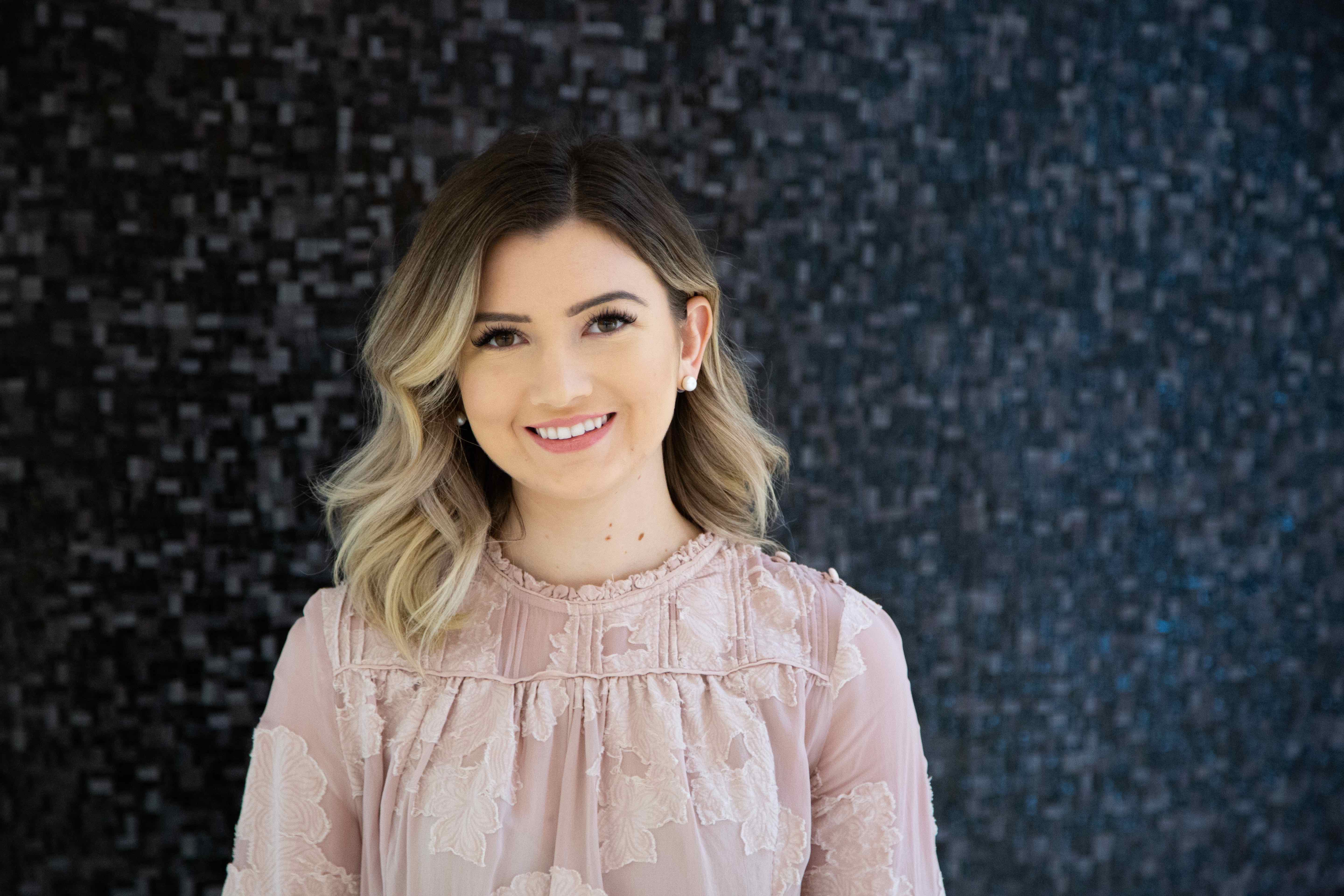
Artificial Intelligence Is Helping Health Systems Perform Better
“This will be a quiet revolution to the way we practice medicine,” says Tim Rappon, an MD/PhD student in the Department of Medicine. “It’s not going to be ‘here’s your robot surgeon.’ But AI is maybe going to suggest a different approach to a particular surgery based on patient factors, pathology or genetics. AI will never replace doctors and nurses, but it is already streamlining and supporting their clinical practice.”
After an extensive literature review across databases in health, business and computer science, Rappon and PhD student Nida Shahid published their findings Feb. 20 in the peer-reviewed, open-access journal PLOS ONE.
Currently, much of the AI excitement in medicine is around prediction and classification of diseases, whereas the ability of intelligent machines to improve the health system has been overlooked and seems to be an important challenge for decision-makers, says Shahid, a student at U of T’s Dalla Lana School of Public Health.
Intelligent machines can help with everything from running a hospital more efficiently to deciding how to allocate resources and planning departmental workflows in a complex health system, says Shahid.
“I hope the increased use of machine learning in health care will help us make better decisions on all levels,” she says. “I appreciate we should be cautious in what AI-based tools have to offer and its potential limitations, however as decision-makers we’re also under a lot of pressure to make sure we are taking advantage of such advancements in our collective journey towards a value based health system. I hope we truly leverage all it has to offer and engage in open and constructive dialogues across disciplines.”
The pair found that artificial intelligence is already being used to predict health care expenditures for Taiwan’s National Health Insurance program using macroeconomic, demographic and health system variables. Based on the results, the AI model produced significantly more accurate forecasts of health care costs than classical forecasting methods.. They also found that doctors are more likely to use hybrid versions of AI, to provide a more fulsome picture of the problem at hand.
“One model might say that a person has a 70 per cent chance of suffering from pneumonia. But a clinician needs to know why the machine thinks this way before starting treatment,” says Rappon. “A hybrid might spit out the 70 percent prediction but also say this person is 1 running a fever and that their labs and past history show they could have pneumonia.”
Much of the artificial intelligence that works to improve health delivery or the health system will probably be invisible to patients, the pair believe. Helping to make people’s medical records not just more accessible but also ‘intelligent’ could be one crucially important development.
What if the emergency room doctor who has never met you before could instantly see the most relevant parts of your past medical history for your presenting condition?” Rappon asks. “The first kind of use [of AI] will probably be better records, better use and sharing of records. There’s a lot of health data coming online now, but currently we’re not able to make good sense of it.”

Optimize this page for search engines by customizing the Meta Title and Meta Description fields.
Use the Google Search Result Preview Tool to test different content ideas.

Select a Meta Image to tell a social media platform what image to use when sharing.
If blank, different social platforms like LinkedIn will randomly select an image on the page to appear on shared posts.
Posts with images generally perform better on social media so it is worth selecting an engaging image.
Heidi Singer
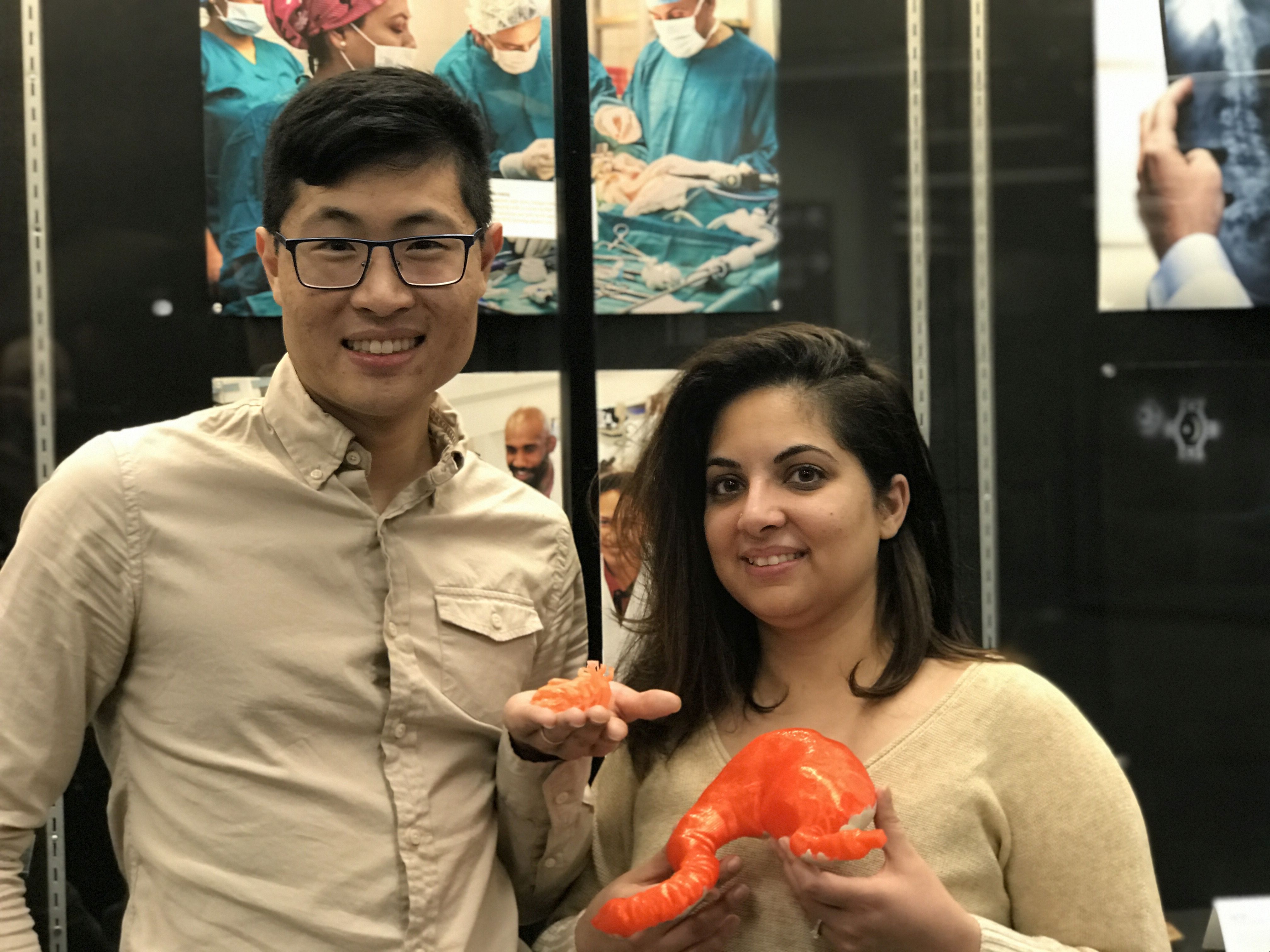
New Elective in Addiction Medicine to Tackle Stigma and Place Students in the Community
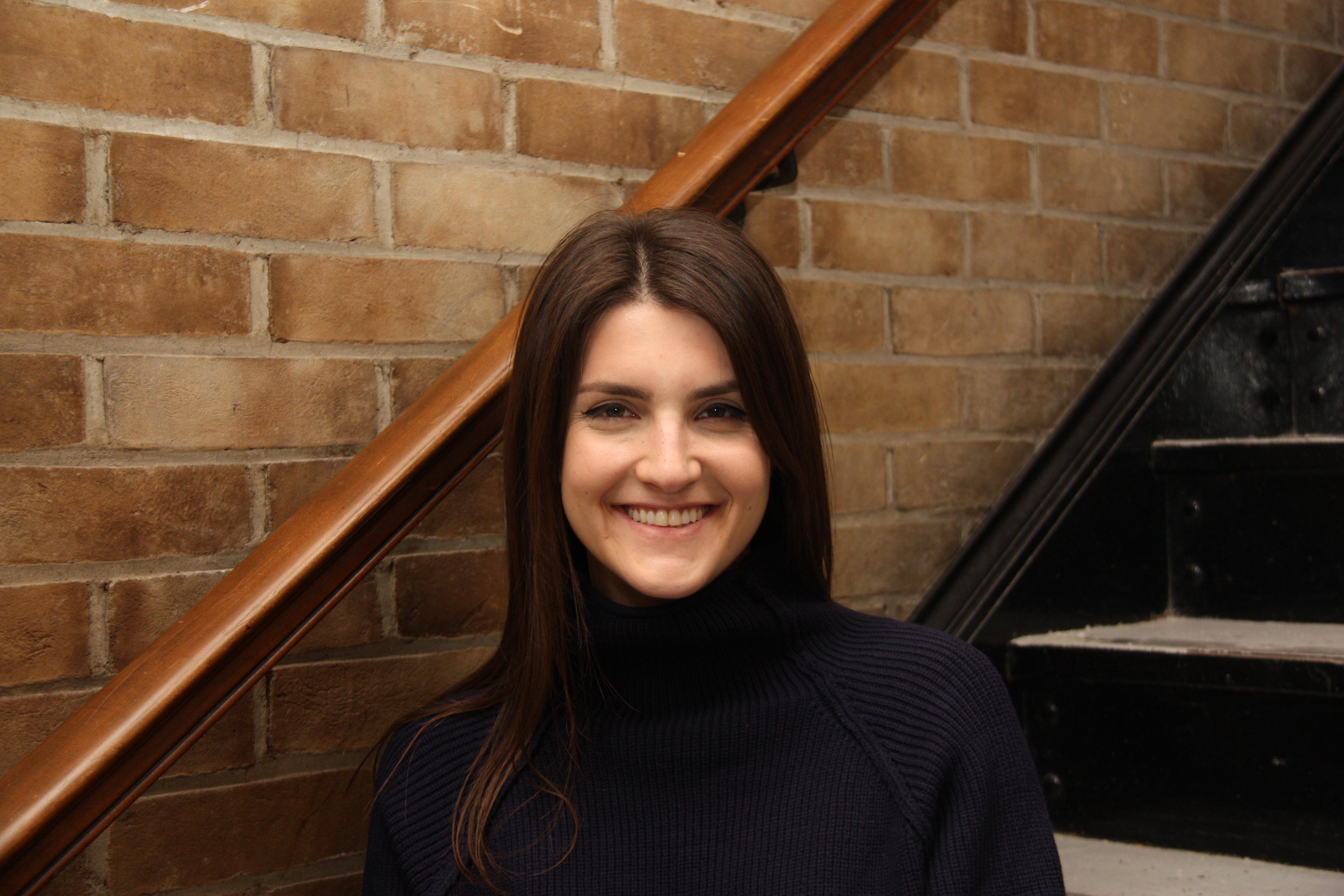
Medical students at the University of Toronto will soon be able to immerse themselves in a week of experiential learning about addiction medicine, thanks in large part to efforts by one of their own.
Robin Glicksman was a first-year student at the school last year when she spent a week at the Hazeldon Betty Ford Summer Institute for Medical Students in California. She returned to Toronto with a new perspective on addiction and a desire to share what she learned with other students.
“It was such a great experience because it really made addiction more human for me,” says Glicksman, who shadowed a 73-year-old woman going through rehab during the mornings and attended class-based sessions in the afternoons. “But I thought, why go to California when we have the Centre for Addiction and Mental Health, and rapid access clinics and residential treatment centres here?”
Glicksman pitched the idea of an immersive addiction medicine week to several academic leaders at U of T before finding a home for it in the department of family and community medicine. More than 40 faculty members have come together to build a curriculum, which will run this summer as a pilot elective for first- and second-year students.
The program will have about 15 spaces and be the first of its kind for preclerkship students in Canada.
“This is exactly what medical scholarship in a university should be,” says Ruby Alvi, an assistant professor and preclerkship director in family and community medicine. “Robin saw a gap in the undergraduate curriculum and directed her own learning to fill it; now she’s keen to bring what she has learned to her peers and home institution. The spirit of scholarship is seeking and sharing knowledge.”
Glicksman had already done much of the legwork by the time Alvi and her departmental colleagues reviewed the proposal. “Robin spent the summer interviewing the community organizations where she hoped to find placements, and to see if they shared her vision,” Alvi says. “As an educator, nothing is more exciting than seeing a student inspired by learning take it to the next level with such enthusiasm.”
It takes passion to move a medical training program from concept to reality. Peter Selby, a professor in the departments of family and community medicine and psychiatry at U of T, recalls that an interest in addiction medicine training in the 1990s led nowhere — despite the support of senior leaders across Ontario’s medical schools.
“We tried in past, but there is magic in having a highly motivated student who pushes the faculty and school to make this kind of change,” says Selby, who recently completed his term as director of medical education at CAMH.
There is a pressing need for more training in addiction medicine, given the ongoing opioid crisis and continuing health challenges linked to tobacco, alcohol and other drugs. “Addiction is an equal opportunity condition that affects patients who show up in every specialty, so every physician needs to know about it,” says Selby. “As well, many doctors see it at an early stage but don’t recognize it.”
That’s a big loss, Selby says, because effective screening tools and treatments exist. “More doctors should follow the screening guidelines, whether it’s in the emergency department, a psychiatric facility or general practice. And generic medications that can address these problems have been around since the ‘90s. It’s not rocket science.”
Selby and other faculty hope the program will expand within U of T and eventually to other medical schools, although that growth will depend in part on research. Joyce Nyhof-Young and Alvi will co-lead an evaluation of the program next year with Glicksman, who will work on the study through her Health Sciences Research course in the MD program.
The research group plans to get user-centred feedback from several sources — students and faculty from various specialties but also community agencies. “We’ll aim for a well-rounded evaluation, through qualitative methods such as on-the-spot interviews and focus groups, and follow-up telephone interviews and surveys,” says Nyhof-Young, who is the curriculum evaluation coordinator for the MD Program and a senior education scientist in family and community medicine at U of T, and at Women’s College Hospital.
The ultimate goal, says Glicksman, is a rigorously tested program that takes a multidisciplinary, multi-specialty and empathic approach to addiction — especially toward the issue of stigma, which often still prevents effective treatment. “Many people struggling with addiction don’t fit a stereotype,” she says. “That was certainly true of my partner at Betty Ford. Understanding that was less about medicine and more about hearing her story.”
If you use substances and need help, or if you seek support for someone you know, call Access CAMH 416-535-8501 ext. 2 (no referral required). On the web, visit ConnexOntario for OHIP-covered programs across Ontario, or the physician health program for physician-specific help. MD students who need support can contact U of T’s office of health professions student affairs; for post-MD trainees, there is the office of resident wellness.

Optimize this page for search engines by customizing the Meta Title and Meta Description fields.
Use the Google Search Result Preview Tool to test different content ideas.

Select a Meta Image to tell a social media platform what image to use when sharing.
If blank, different social platforms like LinkedIn will randomly select an image on the page to appear on shared posts.
Posts with images generally perform better on social media so it is worth selecting an engaging image.
Jim Oldfield

From U of T to the UN: MD Student headed to Commission on the Status of Women
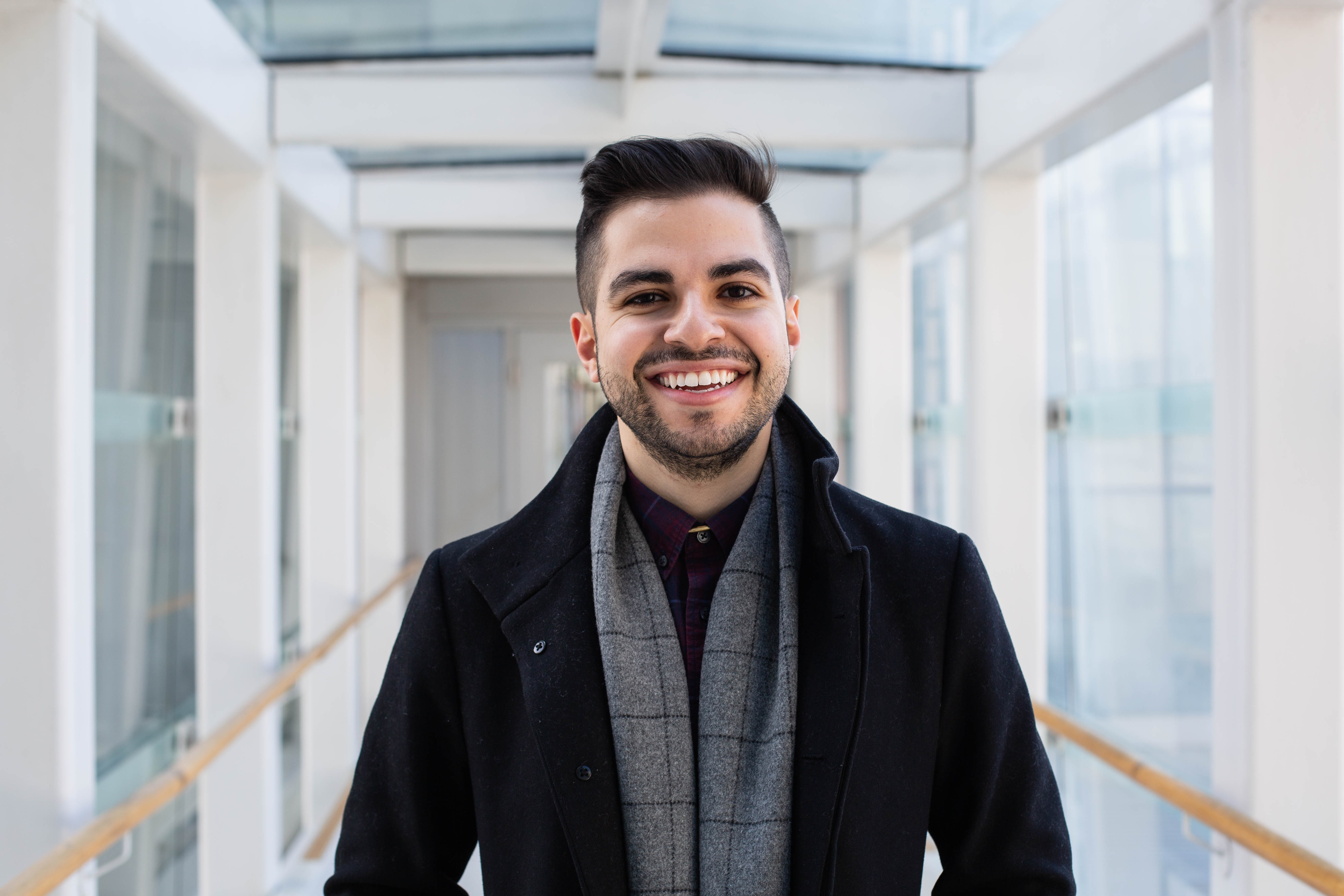
Tommy Hana, a second-year MD student, is packing his bags for a trip to the United Nations (UN) Headquarters in New York City. Hana is a member of the International Federation of Medical Students’ Associations (IFMSA) delegation heading to the sixty-third session of the Commission on the Status of Women (CSW). The meeting includes international government officials, activists and non-governmental organizations and centres on discussions about women’s rights and empowerment. Hana recently shared his thoughts with writer Erin Howe.
Why did you want to be part of the delegation headed to the CSW?
Growing up, I faced barriers because of identities I had no control over. My parents fled to Canada from Northern Iraq as political refugees without much money or any formal education. I grew up in low-income neighbourhoods where opportunities for professional development were few. Avoiding being groomed by neighbourhood gangs, respecting and simultaneously avoiding the police and keeping track of what streets you could and couldn’t walk was common.
My parents blocked out the sounds of sirens and racist slurs with their encouragement to continue to work hard and take advantage of every opportunity that came my way to make the lives of the people around us easier. I’ve gotten to where I am today by standing on the shoulders of people who advocated on my behalf. I believe that it’s my turn to use my privilege as a cisgender man and medical student to support people who are typically left behind in the health care system.
Being a delegate to the CSW will provide me with a platform to advocate for health equity across genders, in allyship with women, transgender, intersex and non-binary people. I also hope to work with my fellow delegates to bring light to the health disparities women face using an intersectional lens. It’s imperative to acknowledge race, gender identity, sexual orientation, ability, migration status and socio-economic status as compounding social identities that present unique barriers when it comes to accessing care.
Can you tell me a bit about the IFMSA?
The IFMSA is one of the world’s oldest and largest student-run organizations. It represents over a million medical students from 135 national medical organizations in 125 countries. The IFMSA engages medical students around the globe in discussions and projects in public health, sexual and reproductive health, medical education, and human rights.
How big is the group and where are the other delegates coming from?
This year’s delegation is made up of eight people from regions from around the world. I’m the representative for the Americas.
We have a diverse group which includes members from Jordan, Taiwan, Germany, Holland, Lithuania, Tunisia, and Australia. As such, in organizing conference calls we’ve become time zone masters! Our preparations began months ago, with various email chains, Whatsapp groups and conference calls.
What are you most looking forward to?
I’m excited to meet and learn from women and girls from around the world who push the gender equality agenda forward within the Sustainable Development Goals framework, which is a blueprint for peace and prosperity. Furthermore, I’m privileged to be among the delegates who will present an IFMSA policy document on access to safe abortion as a foundational component of universal health coverage.
However, preparing for the CSW is bitter-sweet. I wish I could say I was proud to have this opportunity, but as a supporter of the UN, I’m ashamed that member states fail to prevent the deaths of women and girls via unsafe abortions. As a future physician, I’m ashamed that political gains are prioritised over the health and safety of women and girls. But I’m hopeful this commission is able to put the values and preferences of women at the forefront of their discussions.
As someone who identifies as male, why do you think it is important to talk about women’s rights?
Gender as it functions today is a grave injustice. At the outset, it’s impossible to speak of gender in isolation or as a binary. Furthermore, it’s negligent to assume gender equality is a reality. We must recognize there’s no such thing as equality when the foundational supports for women have been dismantled by centuries of misogyny, racism, ableism, heterosexism, transphobia, and xenophobia.
Our expectations for women have evolved, but our social, political, and legal structures have lagged far behind. Our societies are intrinsically set up to benefit men. How can we say all genders are equal when we fail to recognize the importance of things like maternity leave, access to reproductive health services and bodily autonomy? As men, I believe it’s crucial to stand in solidarity with women, transgender, intersex and non-binary people while they lead conversations on gender equality. As a society, we must hold policy makers accountable to distribute resources equitably, provide more support and opportunities to people who continue to be left behind.
How might this experience shape your path through and after medical school?
As somebody who hopes to provide the best possible care to my patients through clinical practice and policy work, it’s my duty to learn as much as I can from the communities I aim to serve. Although I’m still undecided on what kind of physician I want to be, I have great interest in women’s health. The CSW will be an incredible learning opportunity to understand the political and social barriers that prevent women from accessing the care they deserve.
That said, the inspiration for my advocacy won’t come from the UN Headquarters. It will continue to come from the women at the Rexdale Community Health Centre, the 519 and the Fred Victor along with all the other women who’ve thrived through hardship to lay the groundwork for healthier communities.

Optimize this page for search engines by customizing the Meta Title and Meta Description fields.
Use the Google Search Result Preview Tool to test different content ideas.

Select a Meta Image to tell a social media platform what image to use when sharing.
If blank, different social platforms like LinkedIn will randomly select an image on the page to appear on shared posts.
Posts with images generally perform better on social media so it is worth selecting an engaging image.
Tommy Hana, a second-year MD student, is packing his bags for a trip to the United Nations (UN) Headquarters in New York City.

BSAP Opens Opportunities to Black MD Students
14 Black students entered medical school in first cycle of new admissions pathway
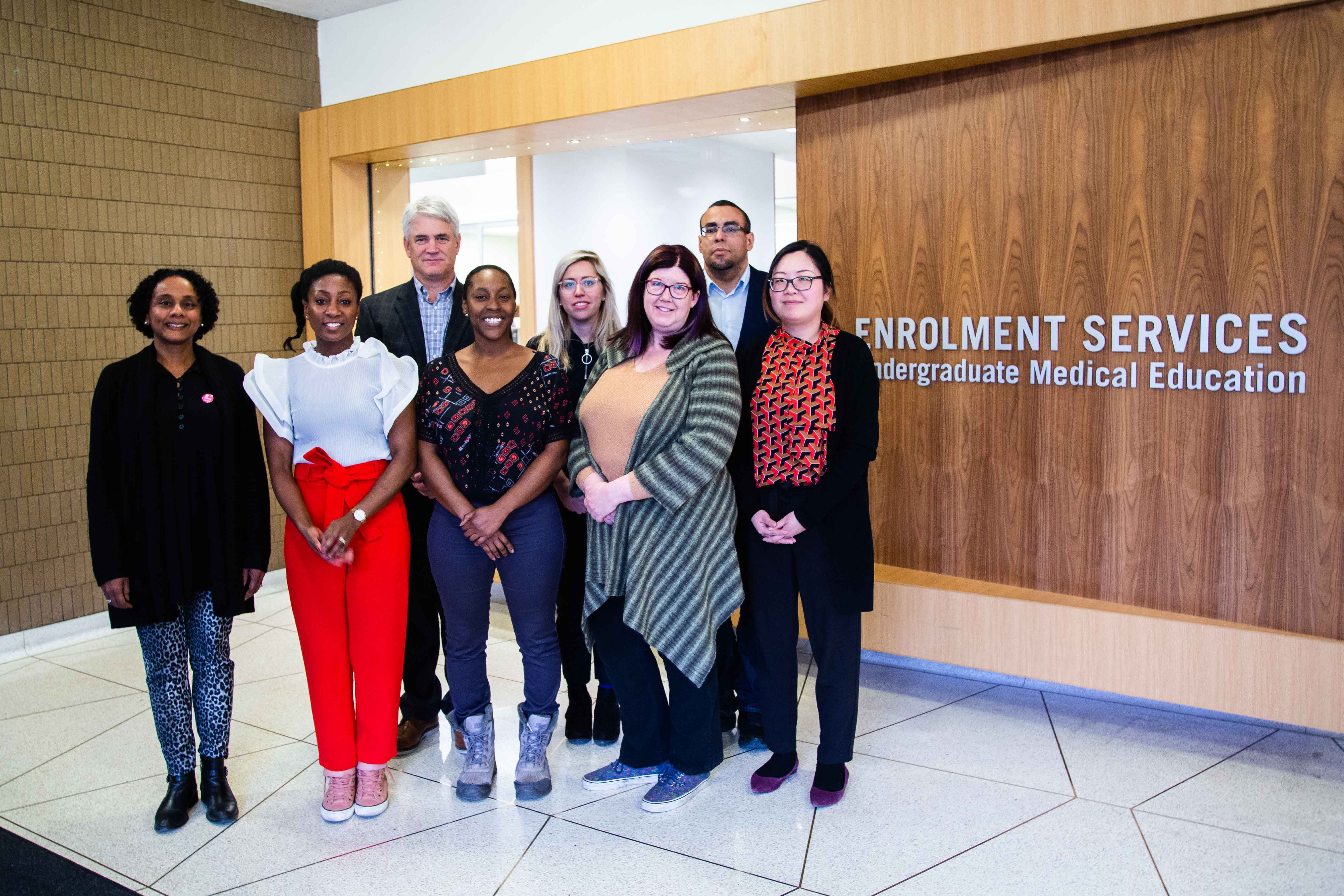
Growing up, Chantal Phillips was not sure whether medical school was for her. It wasn’t because she wasn’t interested, but because she couldn’t see anyone like herself practising medicine.
Now in her first year of the MD Program at the University of Toronto, she reflected on how race and poverty made med school seem unattainable, at a recent public consultation session on the Black Student Application Program. The program launched in early 2017 and welcomed its first cohort this fall.
“I grew up in poverty, but I didn’t realize it until I was six,” said Phillips, who was raised in Toronto’s Jane and Finch community. “I was visiting my step family in Vaughan when it hit me. I saw those kids had opportunities to be doctors that I didn’t. But now, I am the first person in my family to go to university and I will be the first to be a doctor.”
The public session was an opportunity to report back to the community about the success of BSAP’s first admissions cycle.
“We’re here to talk about a program that we’re very proud of,” said Professor Patricia Houston, Vice Dean of the MD Program.
In BSAP’s first year, 14 students were admitted to the MD Program through that pathway. At the time BSAP launched, just one student in the first year class was Black. In previous years, generally less than five per cent of MD students identified as Black.
“We’re passionate about creating a great opportunity, not just for those admitted through BSAP, but for all of our students who will benefit from more diverse colleagues,” said Houston.
Professor David Latter, Director of MD Admissions and Student Finances, stressed that the increase in Black MD students was not the result of any quota. BSAP applicants still have to meet the same rigorous admission standards as all other applicants.
“I think one of the reasons we saw this increase is because U of T is being seen opening our doors and showing that we’re serious in our commitment to welcome more Black students into our program,” said Latter.
Students who apply through BSAP, in addition to meeting the standard admission requirements, are required to write an additional 250-word personal essay. As part of the admissions process, members of the Black community – as well as Black physicians, faculty members, and students – take part in admissions file review and admission interviews.
Francis Garwe, who is Acting Chief Executive Officer of Carea Community Health Centre in Durham Region, is one of the community reviewers for MD admissions. In reviewing files, he said, the different life experiences of applicants becomes evident.
“You’ll see applicants who are doing great things, but they’re not working a part-time job or babysitting their brothers and sisters. Having an appreciation for those other commitments is an important lens too, when you’re trying to identify people who make great doctors,” says Garwe.
BSAP is only one of the initiatives intended to diversify U of T’s MD Program, which is based on a similar program aimed at Indigenous students. In 2015, U of T established Community of Support to enable students who are Indigenous, Black, Filipino, economically disadvantaged, or who self-identify with having a disability at every stage of their journey to medical school. This includes admissions advising, mentoring, and support through the application process, including MCAT and interview preparation. Under the leadership of Ike Okafor, Senior Officer, Service Learning in the MD Program, the program has spread to other medical schools across Canada.
And, for nearly 25 years, U of T Medicine has hosted the Summer Mentorship Program, which gives high school students of Indigenous or African ancestry a chance to explore health sciences at the University over four weeks in July More than 800 students have participated in the program since it was established.
Meet two students who joined U of T's MD Program through BSAP
While it’s important to open up new pathways to medical schools, says Professor Onye Nnorom, Black Health Lead of the MD Program, it’s also important to provide a culturally safe and supportive space for Black students when they arrive. In partnership with the Black Physicians’ Association of Ontario, Nnorom has been working with Dr. Renée Beach to establish a mentorship program for Black MD students. She has also incorporated more information about cultural safety and population-specific health needs into the MD curriculum.
“We want to ensure our students feel safe and secure so they can focus on their studies and do what they need to do to succeed,” says Nnorom.
That work is appreciated by Phillips, who admits to having a sense of ‘imposter syndrome’ as a new medical student.
“I sometimes feel like I don’t belong. But I remind myself I do, and then do the inner work that makes me realize it’s true.”

Optimize this page for search engines by customizing the Meta Title and Meta Description fields.
Use the Google Search Result Preview Tool to test different content ideas.

Select a Meta Image to tell a social media platform what image to use when sharing.
If blank, different social platforms like LinkedIn will randomly select an image on the page to appear on shared posts.
Posts with images generally perform better on social media so it is worth selecting an engaging image.
Liam Mitchell

Faces of U of T Medicine: Chantal Phillips and Semir Bulle
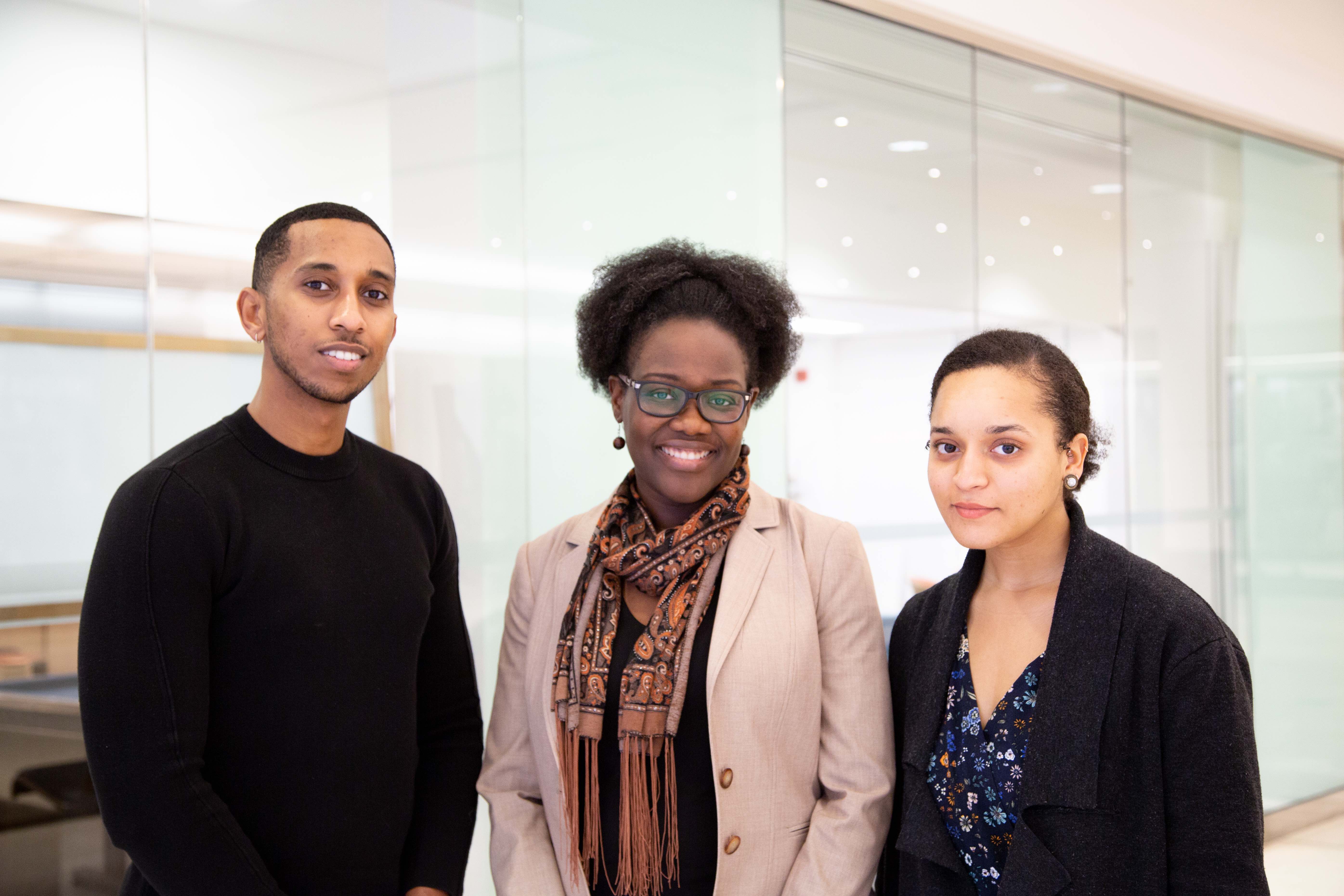 The Faculty of Medicine’s Black Student Application Program (BSAP), which began in 2017, provides a more culturally safe admission pathway for Black students to medical school. Modeled on a similar pathway for Indigenous students, BSAP welcomed its first cohort in September. Now, after one term in U of T’s MD Program, Faculty of Medicine writer Liam Mitchell spoke with two students who participated in BSAP – Chantal Phillips and Semir Bulle (pictured above with Dr. Onye Nnorom, MD Black Health Lead) – to discuss their experiences and reflections on why BSAP matters.
The Faculty of Medicine’s Black Student Application Program (BSAP), which began in 2017, provides a more culturally safe admission pathway for Black students to medical school. Modeled on a similar pathway for Indigenous students, BSAP welcomed its first cohort in September. Now, after one term in U of T’s MD Program, Faculty of Medicine writer Liam Mitchell spoke with two students who participated in BSAP – Chantal Phillips and Semir Bulle (pictured above with Dr. Onye Nnorom, MD Black Health Lead) – to discuss their experiences and reflections on why BSAP matters.
What inspired your interest in medicine?
Chantal Phillips (CP): My mother was a personal support worker (PSW) throughout my childhood and it was clear how much she cared for her patients. Having her as an example of what an empathetic health care provider looked like gave me insight and sparked my desire to emulate that in my own career. At the systemic level, my interest in addressing health disparities in the black community was a major propelling factor. Overall, I knew being a doctor would help merge my desire to positively and directly impact lives, while also influencing social systems that have downstream effects on the morbidity and mortality of Black Canadians.
Semir Bulle (SB): Growing up in the Dixon-Rexdale area, the majority of people in my community were newly landed immigrants and refugees. I’ve witnessed countless situations in which people wouldn’t go to the doctor because they felt the doctor wouldn’t properly understand them and worried the recommended course of action would be unaffordable. When you live paycheck to paycheck, being sick can be the straw that breaks the camel’s back and I just don’t think that’s a fair in our society. That, coupled with my experiences serving in the hospitals in rural Ethiopia, has shaped my view on life and the intersection of healthcare and policy work.
Do you have a sense of what type of medicine you want to practice?
CP: Throughout the first four months of medical school, I was certain I wanted to be a public health physician. Many of the physicians I look up to prioritize the role of public health in their careers and I assumed that would be the best way to express my passion for advocacy. However, through more recent experiences shadowing, I’ve started to challenge that notion. Public health can be incorporated into practically any specialty and the social determinants of health play a pivotal role for all patients. With that being said, I’m back to square one and excited to further explore additional specialties.
SB: Right now, I’m definitely leaning towards surgery. I enjoy the hands-on nature of the work and the intricacies of the human body interest me. However, I’ll certainly pursue policy work and political avenues, too since I believe that’s where the true impact is when it comes to overall change.
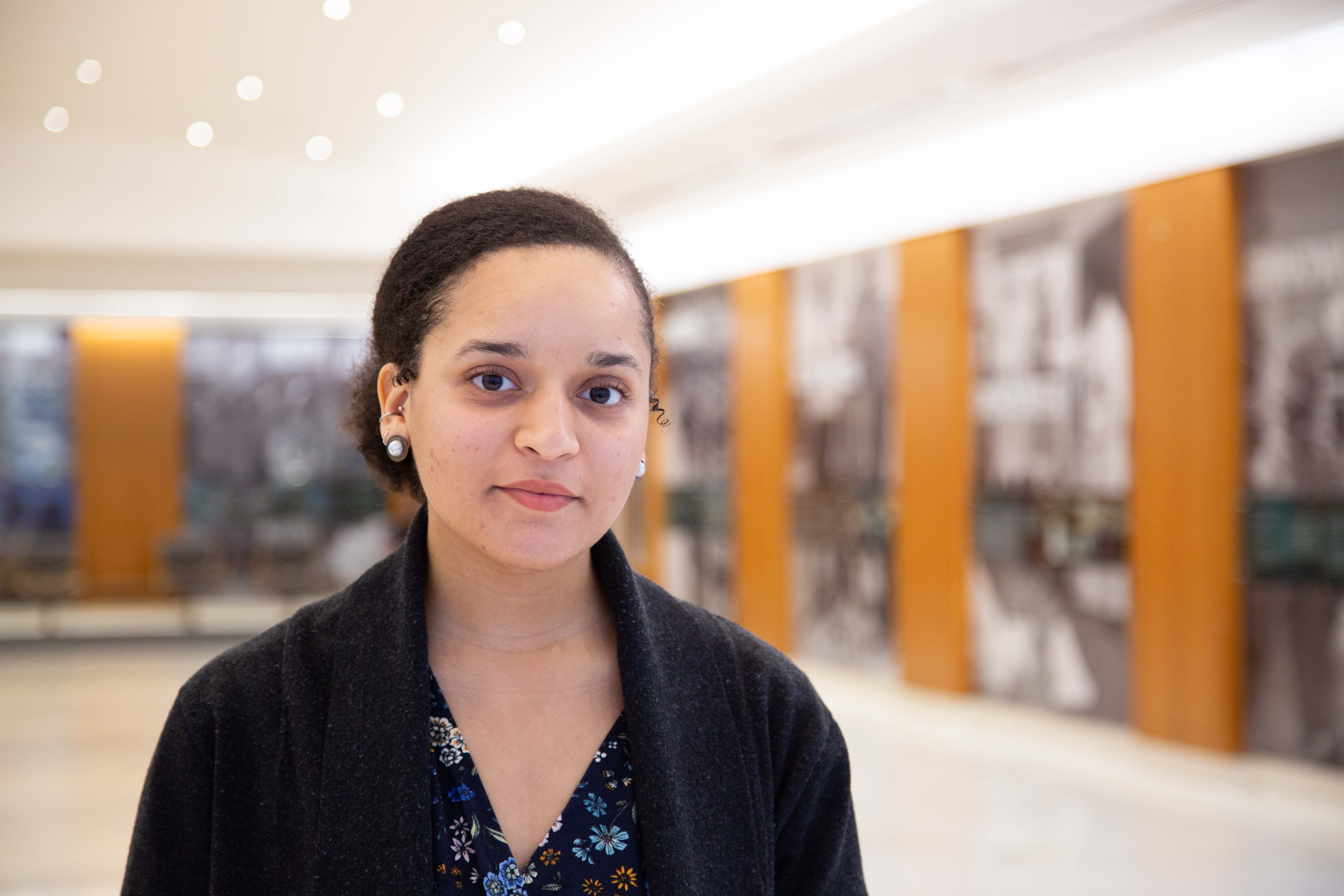 Did you know many Black health care professionals before applying to med school?
Did you know many Black health care professionals before applying to med school?
SB: Absolutely none. I’m the first in my family to get a degree and I had no role models or mentors on my path to medicine, which is essential to increasing representation. When you grow up not knowing or seeing a single doctor of color, but most of the underpaid support staff are people of colour, it makes you question why things are the way they are.
CP: Most of the Black health care professionals I encountered were PSWs or nurses. I’d never been treated by a Black physician, despite living in Toronto and then Brampton, which have substantial Black populations.
Why do you think Black students have been under-represented in medicine?
CP: The nature of privilege and education is multifaceted. Getting into medical school doesn’t start with the application cycle. It starts the moment we’re born and become learners. Black communities experience higher rates of poverty, which influences access to educational resources.
SB: In Toronto, the average low-income family makes $32,000 before taxes. Black people are only 8% of the city’s population but make up 13% of its poor. Compare that to the 3% of Black individuals considered ‘high-income’ at $102,000 annually. As David Hulchanski, a social work professor here at U of T said: “Money buys choice, and people with the most choice are going to choose to live in certain areas.” This contributes to racial disparities in our neighbourhoods and different standards of life for these people.
CP: Children from families of higher socioeconomic status typically have parents with the means to support educational activities. Academic summer camps, time at the library, tutors and early mentorship are examples of privileges that establish a foundation for learning and advancement. Furthermore, underrepresentation is cyclical. When you don’t see people who look like you represented in a particular field, especially a competitive one, it can have a negative impact on your self-image and self-efficacy.
Read more about the Black Student Application Program
How did BSAP help you get to know U of T Medicine better, and help U of T Medicine get to know you better?
SB: This is the first time I’ve had a group of Black peers in university. I went to McMaster and had a diverse friend group, but the lack of Black people was always apparent, especially in science. BSAP gave me a sense of community and that my academic experiences were similar to others.
CP: BSAP reinforces the advocacy, diversity and inclusion outlined in the U of T Medicine strategic plan. It’s one thing to read a strategic plan and another to see measurable action of these documents. Investing in this stream to address an evident disparity emphasized the authenticity of these claims. Applying through the BSAP stream also allowed me to more genuinely speak about my involvement in the Black community. I was confident these initiatives would be appreciated for their full value, considering there were Black community members reviewing the applications.
SB: U of T has done a good job of supporting us, which allows us to be free to learn how to become doctors while still serving the communities we come from and adore.
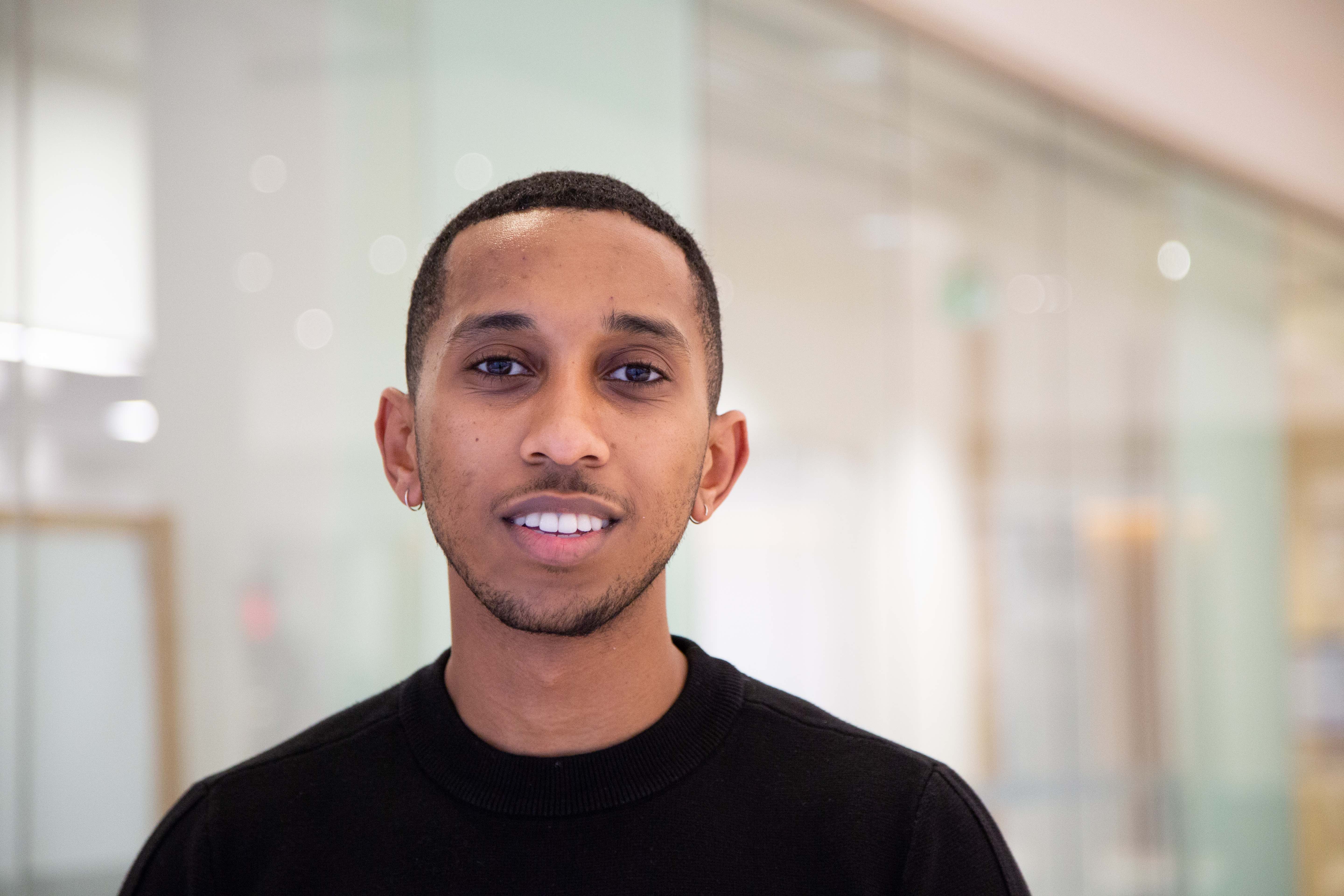 How was your experience during the first term of the MD Program?
How was your experience during the first term of the MD Program?
CP: My initial transition to medical school wasn’t easy. Uprooting and rebuilding your home, academic standing, social circle and community initiatives would be tumultuous for practically anyone. I got really sick at the beginning of flu season because of how much stress I was putting myself under. It was a wake-up call and made me realize I needed to alter what I was doing. I decided to prioritize my wellness and growth. Since then, I’ve been much happier and better integrated. I’m excited to be here and meeting so many amazing people. This might be the honeymoon phase, but I hope it persists and I continue enjoying learning as much as I do now.
SB: I’ve had some of the best times of my life. Everyone has been friendly and there’s a real sense of community. I know most of the people in my class and we get to socialize frequently while getting some of the best education in the world, so there’s really nothing to complain about right now.
What would you say to a Black student considering studying medicine at U of T?
SB: Do your research and look into what you have to do from the second you walk into university. Reach out to as many people as you can and put yourself out there (which is something I never did). It’s going to be a hard road but with sacrifice and a little luck, anything is possible. Also, reach out to us at the Black Medical Students’ Association (BMSA) — we’d give advice if you need it!
CP: BSAP has set a precedent for what an inclusive, advocacy-oriented medical school looks like. Black students are becoming better represented here, there are black faculty members and social justice is discussed throughout the curriculum. If you’re intimated by the application process, want to build a network or seek mentorship, please connect with Ike Okafor who facilitates the Community of Support. Mentorship and preparation are key to a successful medical school application. I can speak on behalf of the other Black medical students and say that we’d love for you to be a part of this community.
Faces of U of T Medicine introduces you to some of the interesting people studying in the Faculty of Medicine. From advising political leaders to providing care to Toronto’s most vulnerable populations, our students are making an impact on communities at home and around the world.
Do you have an interesting story to share? Contact us at medicine.communications@utoronto.ca.

Optimize this page for search engines by customizing the Meta Title and Meta Description fields.
Use the Google Search Result Preview Tool to test different content ideas.

Select a Meta Image to tell a social media platform what image to use when sharing.
If blank, different social platforms like LinkedIn will randomly select an image on the page to appear on shared posts.
Posts with images generally perform better on social media so it is worth selecting an engaging image.

Faces of U of T Medicine: Spandana Amarthaluru
In the next several weeks, students across all four years of the MD Program will be invited to share their opinions about medical education at U of T through the Independent Student Analysis (ISA). The survey is a critical part of the accreditation process, which helps ensure the quality of medical education in Canada. The Committee on Accreditation of Canadian Medical Schools (CACMS) provides the foundation for the survey, but students at each school also lead the development of additional questions to probe specific elements of the experience at each university. Spandana Amarthaluru is second-year medical student and an accreditation co-lead for the Class of 2T1. She recently shared her thoughts about the experience with writer Erin Howe.
How long have you been involved with the ISA and accreditation?
I’ve been involved with the ISA team since October 2018. Although it’s only been a few months, I’ve learned so much about the accreditation process and the CACMS.
How excited are you to launch the ISA to your colleagues?
Given my interest in medical education, this year I joined the Students as Teachers (SAT) program. Through this experience, I’ve gotten to hear about how the new Foundations Curriculum was designed and the principles behind it. Hearing about how medical schools used to work ten or even twenty years ago, I’m grateful our new curriculum has such a great focus on clinical experience and case-based learning as opposed to spending countless hours in a lecture room. As a result, I’m really excited to launch the ISA and hear more feedback from my colleagues.
What was your favourite part of helping develop the additional questions to add to the ISA?
It gave me a chance to reflect on my time at U of T so far. Our team crafted the additional questions so that they would give students the chance to comment on and provide feedback regarding all the different aspects of U of T Med like extra-curriculars, faculty support, the learning environment and more. I think medical school can be very stressful and overwhelming at times, so reflecting on the various aspects of U of T Med as we wrote these questions allowed me to revisit all my positive experiences and appreciate how much I’ve learned so far.
What inspired you to become involved with the ISA?
I’ve always had a longstanding interest in education and pedagogy. In fact, if I wasn’t in medicine, I’m certain I’d be pursuing a career in teaching. The ISA seemed like the perfect opportunity to combine my passions for medicine and education in a way that would benefit my peers and future medical students.
What do you want your classmates to know about the ISA?
The accreditation process only takes place every eight years so our class is lucky to be able to participate in the ISA and have our voices heard. It’s a rare opportunity to highlight areas of improvement regarding our experience as U of T medical students. Conversely, it’s also a great way to reflect on the most enriching aspects of our time here. I believe it’s particularly important for our class to participate in the ISA survey so that we can shape the medical program at U of T for the benefit of future students and colleagues.
What do you enjoy doing when you’re not in school?
Although I don’t have as much time for it as I used to, I love reading. Currently, I’m reading Quiet by Susan Cainwhich was given to me by a mentor I worked with in the summer. I’m also lucky to have a great group of friends who fully support my obsession with food, so we spend a lot of time trying out new recipes together. Aside from that, I’m also a fan of pilates and am excited to start a kickboxing class I’ve signed up for!
For more information about accreditation, visit uoft.me/medcred.

Optimize this page for search engines by customizing the Meta Title and Meta Description fields.
Use the Google Search Result Preview Tool to test different content ideas.

Select a Meta Image to tell a social media platform what image to use when sharing.
If blank, different social platforms like LinkedIn will randomly select an image on the page to appear on shared posts.
Posts with images generally perform better on social media so it is worth selecting an engaging image.
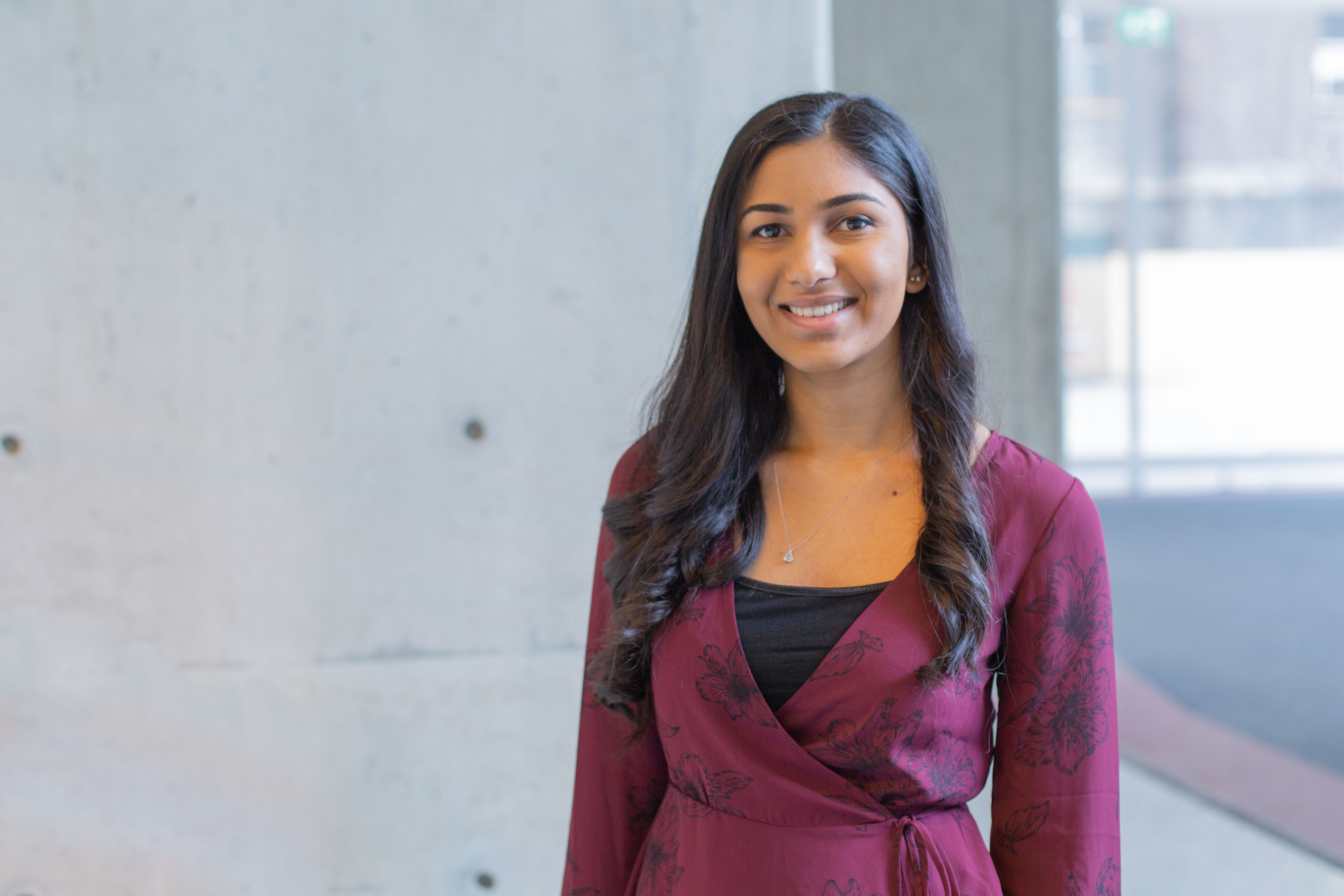
Faces of U of T Medicine: Yesh Rai and Arshia Javidan
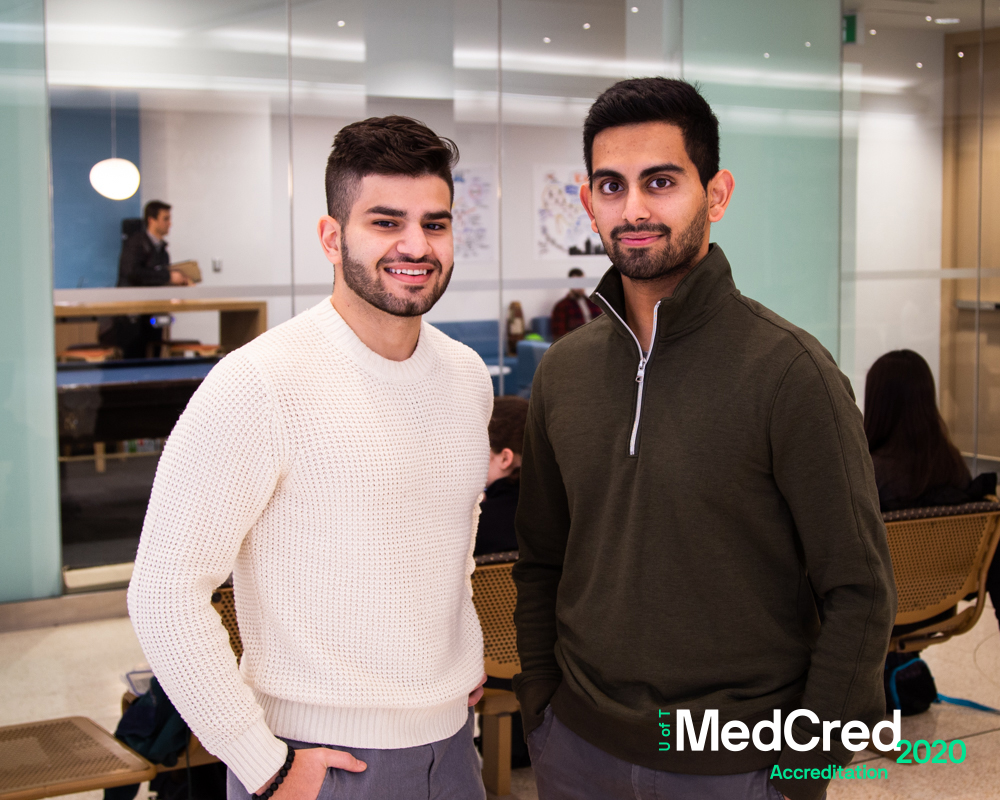 As medical students, Yesh Rai and Arshia Javidan know a few things about evaluations. So, in their roles as the student accreditation leads, they’re helping with an evaluation of the MD Program. The two will drive the Independent Student Analysis (ISA), a key part of the accreditation process. Accreditation takes place every eight years at medical schools across Canada, reflects the quality of their programs, and is required to provide medical degrees. Rai and Javidan, who are both in their second year of the MD Program, recently spoke with writer Erin Howe about their roles and the value of the ISA.
As medical students, Yesh Rai and Arshia Javidan know a few things about evaluations. So, in their roles as the student accreditation leads, they’re helping with an evaluation of the MD Program. The two will drive the Independent Student Analysis (ISA), a key part of the accreditation process. Accreditation takes place every eight years at medical schools across Canada, reflects the quality of their programs, and is required to provide medical degrees. Rai and Javidan, who are both in their second year of the MD Program, recently spoke with writer Erin Howe about their roles and the value of the ISA.
As the ISA Leads, what types of work do you do?
Rai: Our main role is to gather student feedback on all aspects of medical school via the ISA, use that information to create a comprehensive report to support accreditation and improvements to the MD Program. We work with a team of students from each year of the MD Program to help give us a thorough understanding of year-, campus- and MD/PhD-specific concerns. We also work with Chris Jones, the MD Program’s Accreditation Officer, and liaise with MD Program leadership and the Medical Society.
After we have all the data, we’ll compile a report, which will be publicly available online. It will include strengths, weaknesses and recommendations for the MD program. Within a few months, faculty will respond to the areas we’ve highlighted in the report.
What’s the impact of the ISA?
Javidan: It’s a way to evaluate how well U of T Med upholds the accreditation standards set by the Committee on Accreditation of Canadian Medical Schools (CACMS). The ISA looks at these standards through the student lens using a set of standardized questions from CACMS.
The ISA is also an opportunity to improve the quality of medical education at U of T through supplemental questions that reflect specific student concerns. We’ve established a process to ensure if there’s a topic important to you, it’ll most likely be captured in the ISA. This includes things like call room availability in clerkship, the culture of mental health in medical school and how well-prepared students feel for clerkship. That’s just the tip of the iceberg — the ISA is all-encompassing. By identifying areas of improvement, we can bring the faculty’s attention to it and advocate for change.
The last ISA in 2011 led to a lot of improvements students asked for, like greater financial supports, strengthening of certain clerkship rotations (especially surgery) and increased objectivity in clinical evaluations. This ISA will be also be an opportunity to examine student perceptions of the new Foundations curriculum and concerns specific to Mississauga Academy of Medicine students.
What do you want your classmates to know about the ISA?
Javidan: The ISA isn’t just a way to identify areas opportunities for improvement; it’s also a way to celebrate our strengths and highlight the need to sustain them.
We’re thankful for the team we work with, which includes class leads from each year as well as MD/PhD leads. Each set of year leads works with a student task force of 3 to 10 people. Together, they identify areas we should tailor questions to — we’re trying to be as thorough as possible to capture the maximum breadth of student opinion. The ISA is an independent process, so the student team has the final say on how the survey looks.
We’re working with experts from The Wilson Centre to validate our survey. Once it’s ready to go, we’ll work around each year’s schedule to set aside time for students to complete the survey.
We want to achieve the highest response rate possible to make sure the opinions we capture truly represent U of T Med.
Why did you want to be involved in the accreditation process in such a hands-on way?
Rai: I’ve had long-standing interest and involvement in medical education (MedEd) and quality improvement (QI) projects. Accreditation and the ISA are an intersection of the two. It’s a great opportunity to understand the intricacies of the MD Program at U of T, make connections and contribute to the student experience.
Javidan: Medical education at U of T is world-class. One reason is its commitment to improvement. I wanted to be involved with this process and advocate for my peers and future generations of students. Like Yesh, I’ve been interested in MedEd and QI for some time. I’m also working toward a Master’s degree in System Leadership & Innovation and this seemed like the perfect way to engage my interests while advocating for the student body.
It’s still early in the process, but is there anything you’ve learned or been surprised by as you’ve been part of this work?
Javidan: When we started work with the ISA, we initially felt overwhelmed. But focusing on the final vision helped us refine our process and chart the path there. Reaching out to previous ISA leads at other schools also helped us break down overwhelming boulders of tasks into more manageable pebbles.
The other thing I’ve been pleasantly surprised by is how smoothly the process is going. Faculty have been supportive in sorting out the administrative and financial details. We also can’t give enough praise to the student team that we work with. I think these experiences are a testament to the culture of academic support at U of T Medicine.
Finally, we’re open to any questions, comments, or concerns about the ISA. Please feel free to contact us at arshia.javidan@mail.utoronto.ca and yesh.rai@mail.utoronto.ca.
For more information about accreditation, visit uoft.me/medcred.

Optimize this page for search engines by customizing the Meta Title and Meta Description fields.
Use the Google Search Result Preview Tool to test different content ideas.

Select a Meta Image to tell a social media platform what image to use when sharing.
If blank, different social platforms like LinkedIn will randomly select an image on the page to appear on shared posts.
Posts with images generally perform better on social media so it is worth selecting an engaging image.
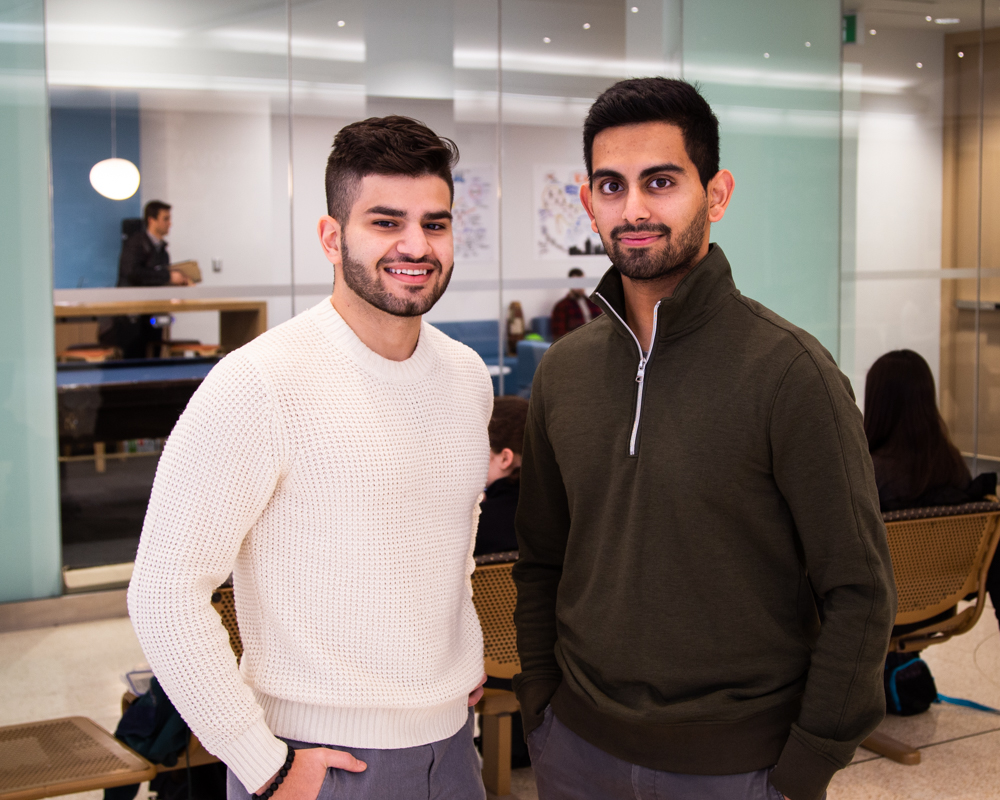
Patient, Pilot, Lawyer, MD Student: The Sky’s No Limit
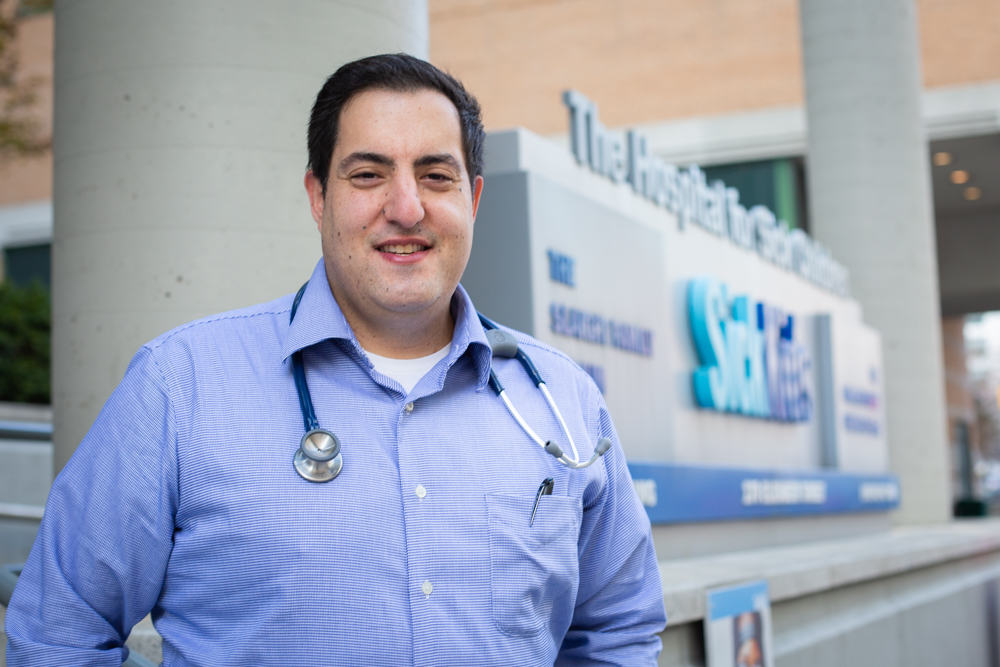 The road to medical school wasn’t a straight path for Adam Shehata. But when he crossed the threshold of The Hospital for Sick Children (SickKids) for his first day of a paediatrics rotation in the University of Toronto’s MD Program in late November, he knew he’d reached an important destination.
The road to medical school wasn’t a straight path for Adam Shehata. But when he crossed the threshold of The Hospital for Sick Children (SickKids) for his first day of a paediatrics rotation in the University of Toronto’s MD Program in late November, he knew he’d reached an important destination.
“It’s difficult just to get into medical school, I had to apply five times,” says Shehata, a third-year medical student. “Then, I was fortunate enough to have a rotation at SickKids, which is a place a lot of people want to be. So, I just felt incredibly grateful.”
The hospital, one of the University of Toronto’s fully-affiliated partners, has had a large presence in Shehata’s life.
Born in 1982 when his mother was just 24 weeks pregnant, Shehata weighed just 660 grams. He was quickly transferred to SickKids.
“The odds weren’t necessarily in my favour. It was really touch and go. It still is for kids born at 24 weeks,” says the 36-year old. “The odds of survival today are roughly 60-70 per cent. Medicine keeps improving and the viability edge is coming down bit by bit. But the question was: what quality of life would I have?”
The first four months of Shehata’s life were spent at SickKids, until he was ultimately able to go home — by ambulance and with supplemental oxygen.
Through childhood, Shehata lived with respiratory issues including severe asthma. He recalls having to stay home from school often, connected to machines that delivered medication. He also underwent a number of ear, nose and throat surgeries — again, at SickKids.
At one point, school officials were concerned he might have a learning disability. He was required to repeat the third grade.
Thankfully, says Shehata, most of his health problems have cleared up, paving the way for the 36-year-old to pursue a variety of passions.
At 15, Shehata was on a plane home from Cairo, Egypt, where his parents had grown up. His father — a pilot — knew the aircraft’s captain and offered to bring the teenager to see the cockpit.
“This was before 9/11, when passengers could visit the cockpit. It was night time, I could see the northern lights and three aircraft up ahead. It was spectacular,” says Shehata. “I went back to my seat and said, ‘you know, Dad, I think I want to do this.’”
He soon became involved in Air Cadets, began to fly glider planes when he was 16 and then enrolled in Seneca College’s aviation program.
After graduation, Shehata spent the next few years working as a pilot, earning additional credentials and eventually, his airline pilot’s license — which is needed to be captain of a large commercial airliner. He also became a trainer, helping teach other commercial pilots to become flight instructors.
Then, the financial collapse of 2008 hit, taking its own toll on an industry still feeling the effects of 9/11. Shehata began to consider the possibility of returning to school to prepare for a second career.
Shehata married, and in lieu of wedding favours, the couple made donations in their guests’ names to two charitable organizations. One of them was SickKids Foundation.
“At the time, we didn’t think I would have any career other than aviation, let alone a career in medicine. We were just grateful for the lives we had,” he says.
When Shehata’s wife became pregnant, the couple learned early in the pregnancy their baby had a severe heart defect. They met with several medical professionals and were ultimately referred to SickKids, where they spoke with a paediatric cardiologist.
“He didn’t have any better news for us, it wasn’t that he could magically fix everything,” Shehata recalls. “It was the way in which he cared for us, the time he took, that made the difference. He spent about two hours — which I’m sure he didn’t have — and carefully explained everything, what things meant and what the options were. We unfortunately lost the pregnancy, but that interaction really helped shape my interest in medicine.”
Meanwhile, another interest was taking off for Shehata — law. He applied to medical school and law school at the same time. He was offered a spot at York University’s Osgoode Hall.
He deferred his acceptance for a year and used the time to pursue additional studies in science and strengthen his next application. In law school, Shehata nurtured his interest in medicine through health law courses.
Ultimately, the fifth time was a charm and Shehata was offered an interview at U of T’s MD program and was placed on the wait list around the same time he completed his articles to become a fully licensed lawyer. Not knowing if he would finally secure a seat in the class, Shehata looked for work as a lawyer. In the end, he received two offers — one for a job, the other for a spot in the MD Program.
“I applied five times to medical school, each time at U of T. But, I never believed I would get into my dream school,” he says.
Last week, the future physician shared his story via a thread on Twitter, thinking it might be of interest to his friends and family.
The response, he says, has been both unexpected and overwhelmingly positive. Shehata says many of the people who have reached out to him are parents and caregivers of premature babies or health-care providers. The Toronto Star has also picked up his story.
In being open about his experience, Shehata hopes to inspire the parents and caregivers of children with medical needs to balance realistic expectations with dreams for those kids to reach for the stars.
The other message is about the importance of preparation, as Shehata points to one of his heroes, Captain Sully Sullenberger, the captain of the plane involved in the miracle on the Hudson.
“If you look closely at what he and his crew did, there was a ton of preparation, skill, training and professionalism that went into what they were able to do that day,” he says. “Providing care is similar. We spend years training, whether we’re preparing to become a doctor, nurse or an allied health professional. My mother tells me one of the things she remembers most vividly from my time in hospital was the exceptional care I got from the doctors, as well as the nurses. And not just the skillful medical care, but the fact that the nurses would take me out and they would cuddle me. That human interaction, empathy and caring were, for her, a really big part of how I came to be here today.”
Now in clerkship, Shehata is working toward his dream of helping others through medicine and dreams where his future will lead next — dreams that will include continuing to reach for the sky.

Optimize this page for search engines by customizing the Meta Title and Meta Description fields.
Use the Google Search Result Preview Tool to test different content ideas.

Select a Meta Image to tell a social media platform what image to use when sharing.
If blank, different social platforms like LinkedIn will randomly select an image on the page to appear on shared posts.
Posts with images generally perform better on social media so it is worth selecting an engaging image.
Erin Howe


